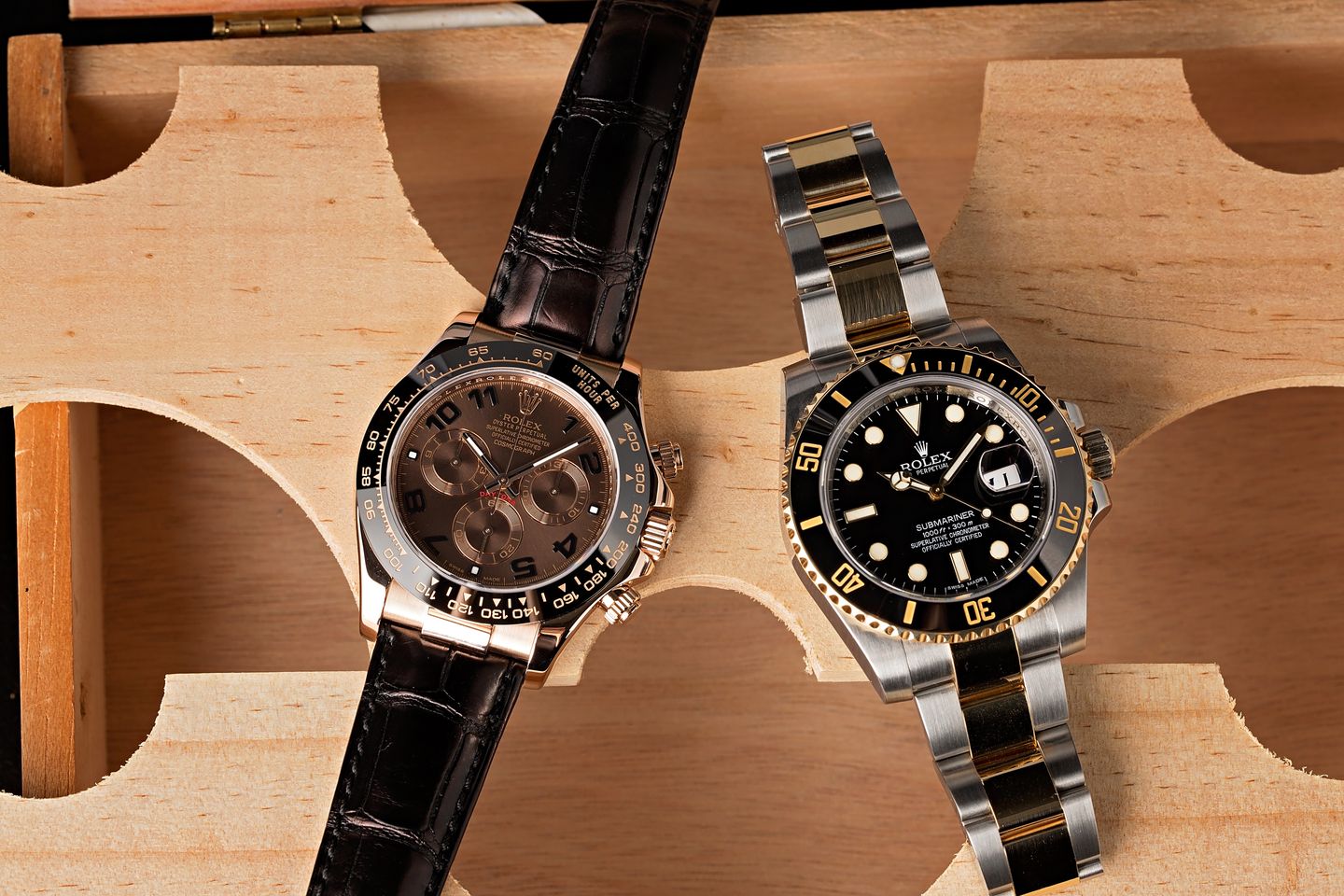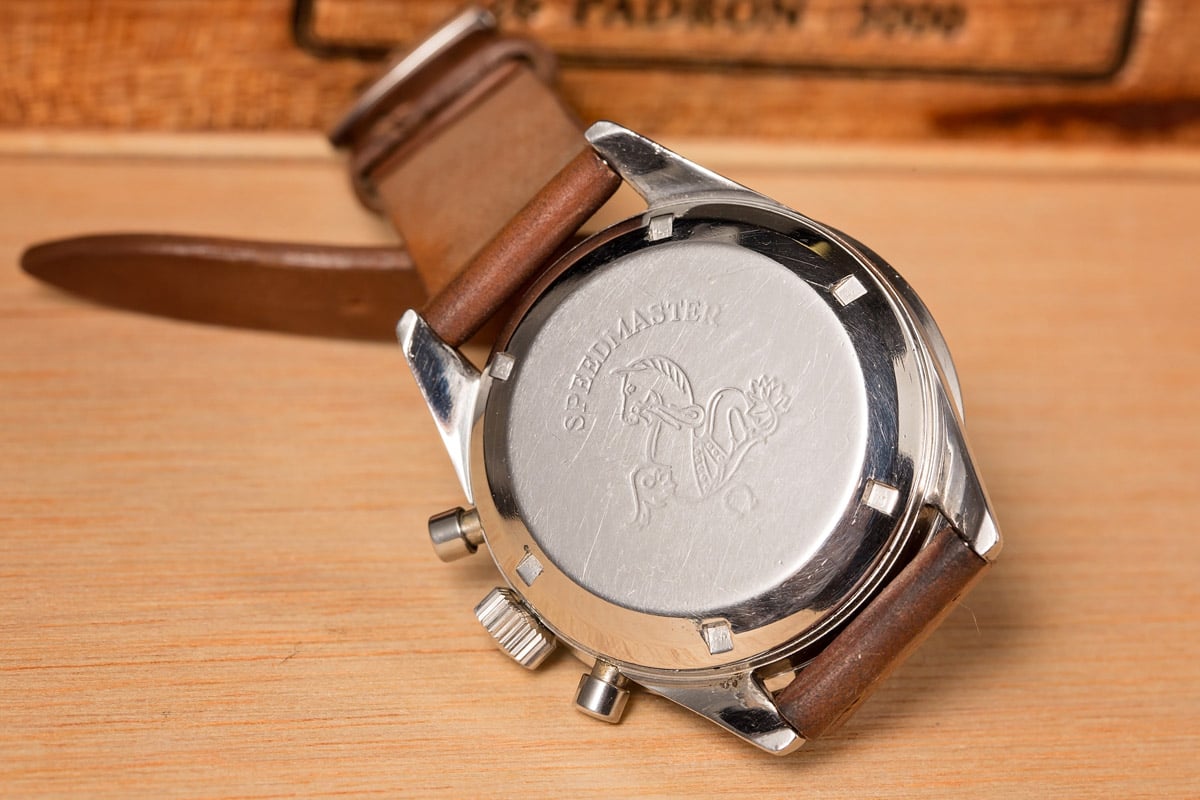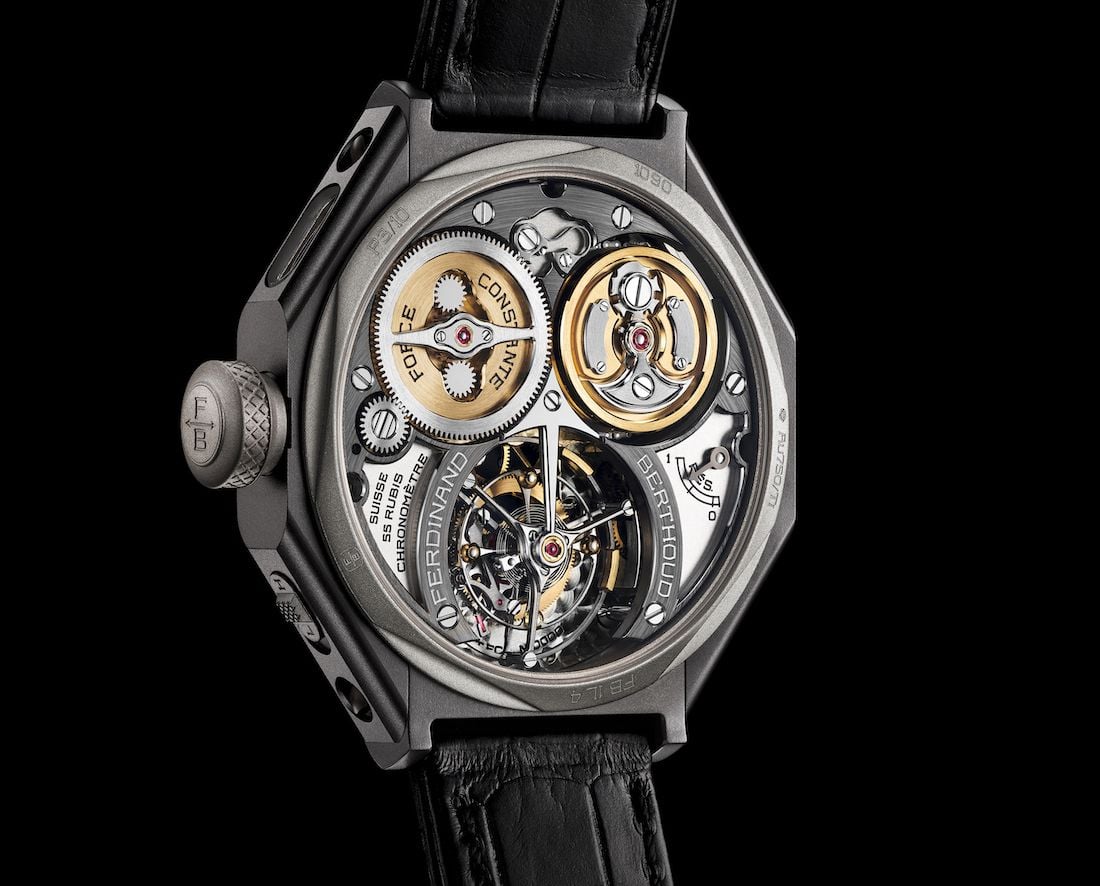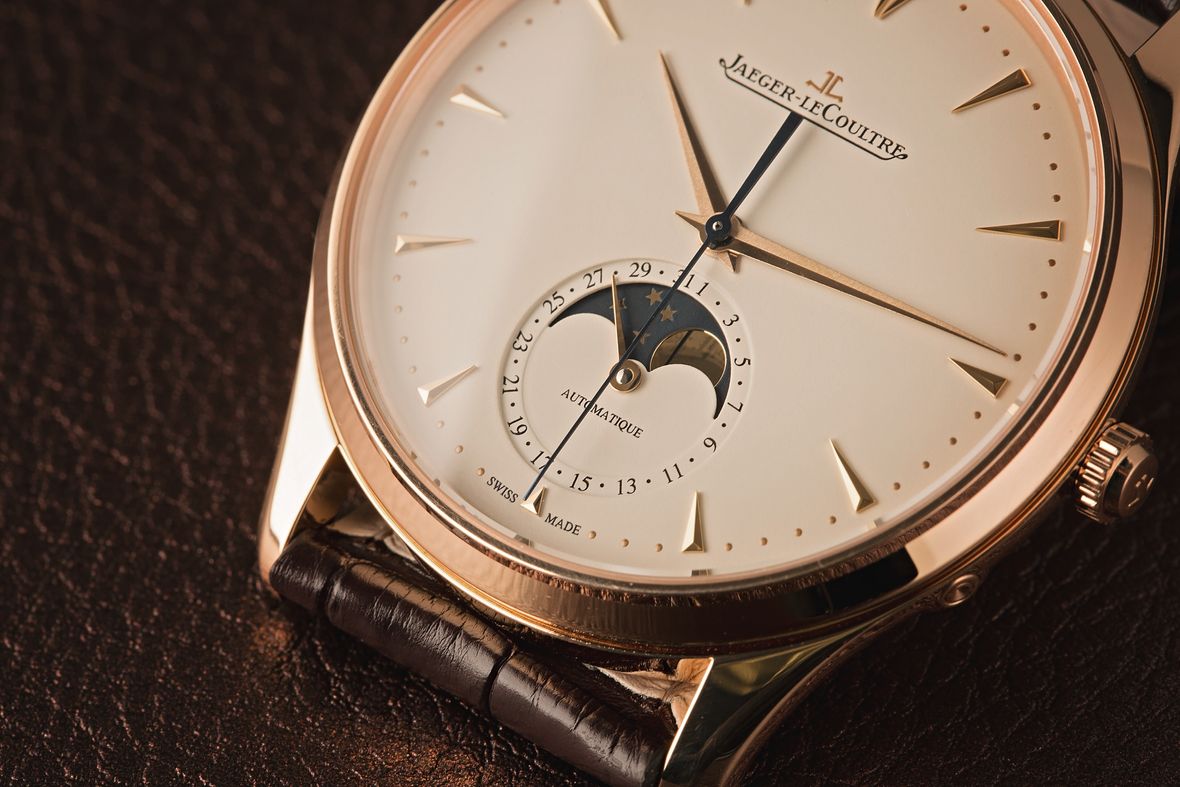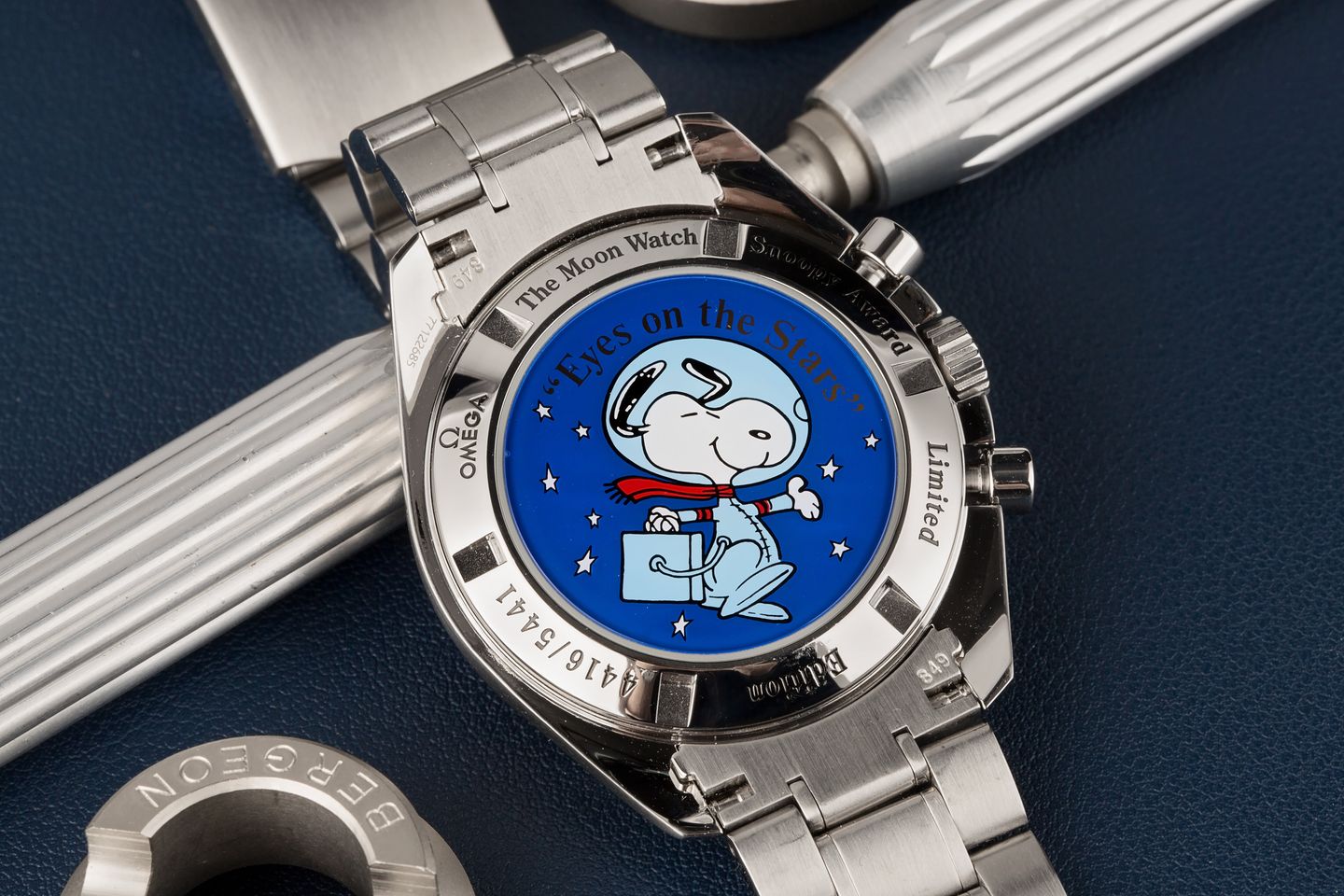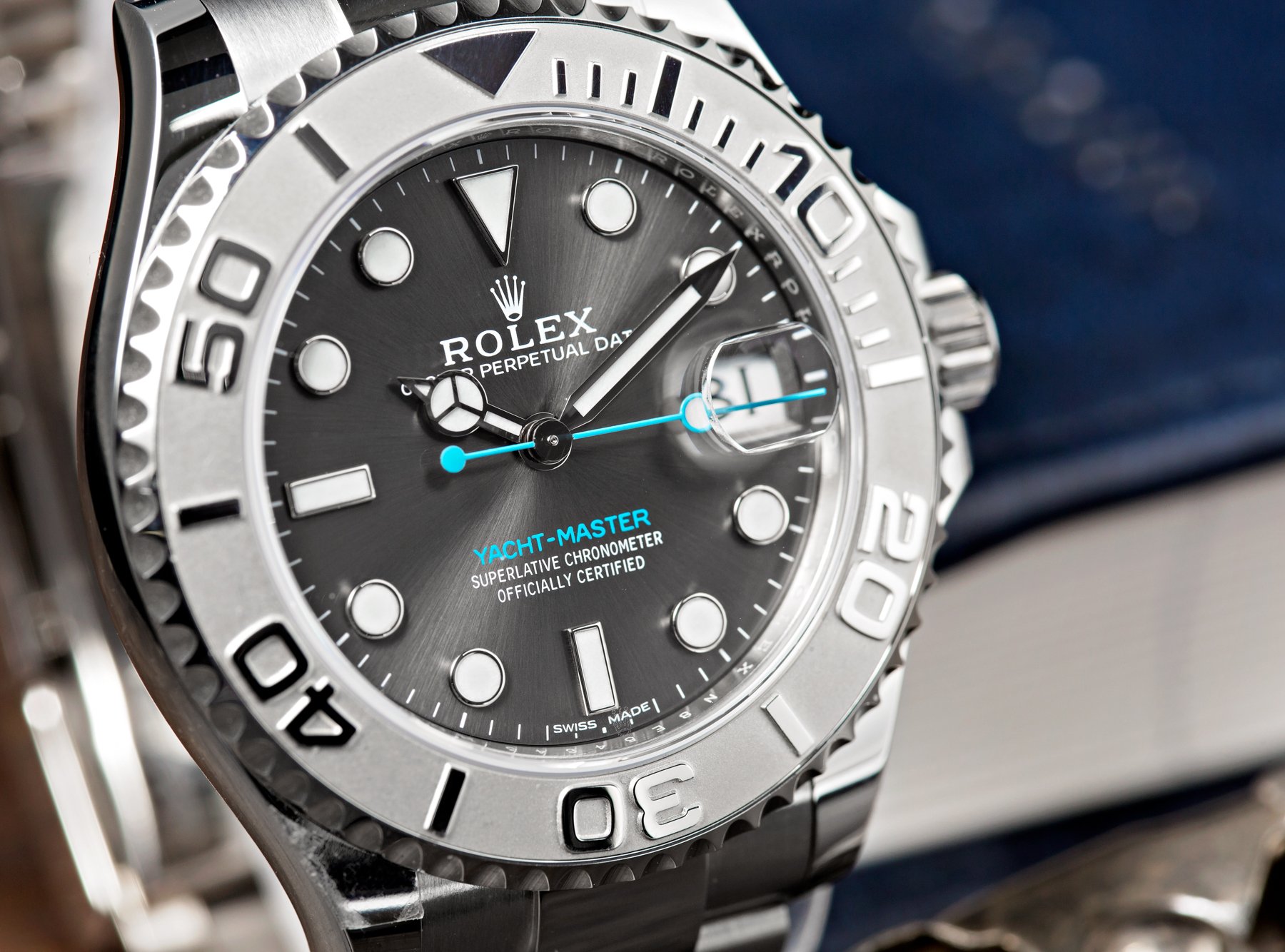Imagine that you are looking at a long list of Rolex reference numbers without any photographs of the corresponding watches. Unless you are well versed in Rolex material and model codes, it may be difficult to translate these digits into pictures of what each watch actually looks like. However, pinpointing the material of a Rolex watch by using its reference number is relatively easy.
Read our quick and handy guide to Rolex material codes so you can identify the metal of a Rolex with just its reference number.
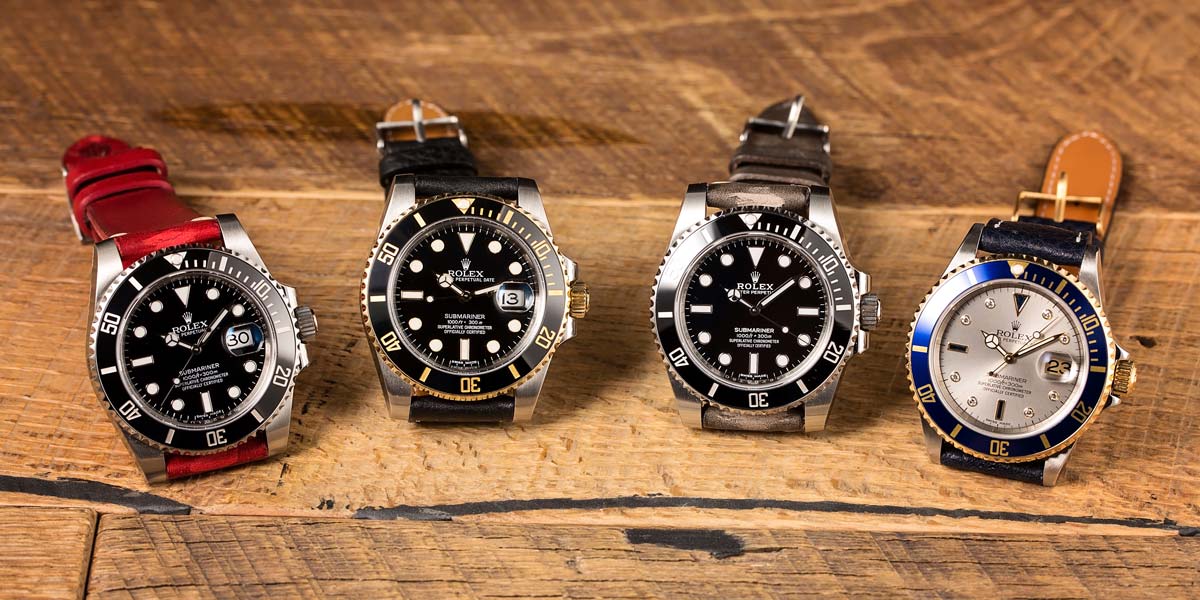
Deciphering the Rolex Material Codes
Depending on the age of the watch, Rolex reference numbers can range from four digits to six digits in length. While all of the digits have significance and help describe the watch, the last number in the reference number is, in fact, a material code – which tells you what metal was used for the construction of the watch.
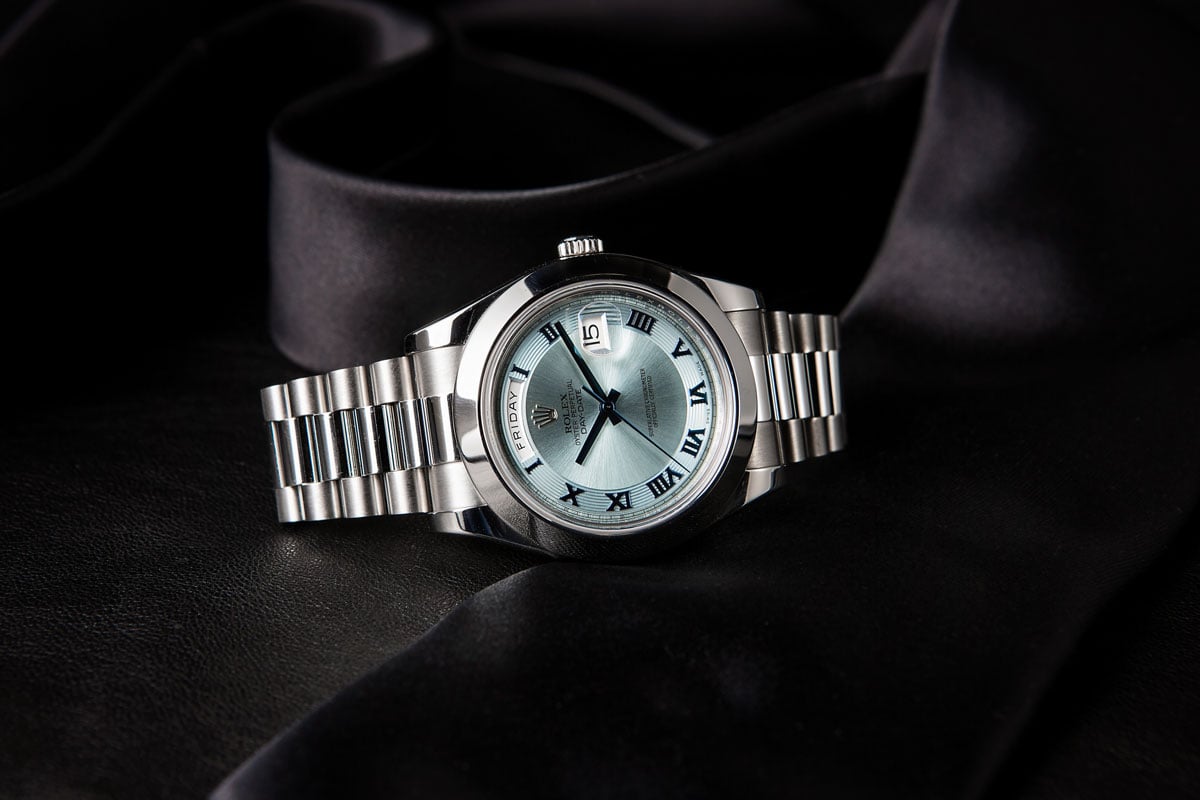
Rolex Metal Codes Guide
0 = Stainless steel (aka Oystersteel)
- examples: Milgauss ref. 116400; Air-King ref. 116900; Explorer II ref. 216570
1 = Stainless Steel + Everose Gold (aka Everose Rolesor)
- examples: Yacht-Master ref. 268621; GMT-Master II ref. 126711; Datejust ref. 126201
2 = Stainless Steel + Platinum (aka Rolesium)
- examples: Yacht-Master ref. 126622; Yacht-Master ref. 268622
3 = Stainless Steel + Yellow Gold (aka Yellow Rolesor)
- examples: Daytona ref. 116503; Sea-Dweller ref. 126603; Sky-Dweller ref. 326933
4 = Stainless Steel + White Gold (aka White Rolesor)
- examples: Date ref. 115234; Sky-Dweller ref. 326934; Lady-Datejust ref. 279174
5 = 18k Pink Gold (aka Everose Gold)
- examples: GMT-Master II ref. 126715; Day-Date 40 ref. 228235; Yacht-Master ref. 126655
6 = Platinum
- examples: Day-Date 40 ref. 228206; Day-Date 36 ref. 118206; Daytona ref. 116506
7 = 14k Yellow Gold (No longer used by Rolex)
- examples: Date ref. 1507; Date ref. 15037
8 = 18k Yellow Gold
- examples: Submariner ref. 116618; Day-Date 36 ref. 118238; Daytona ref. 116508
9 = 18k White Gold
- examples: GMT-Master II ref. 126719; Submariner ref. 116619; Yacht-Master II ref. 116689
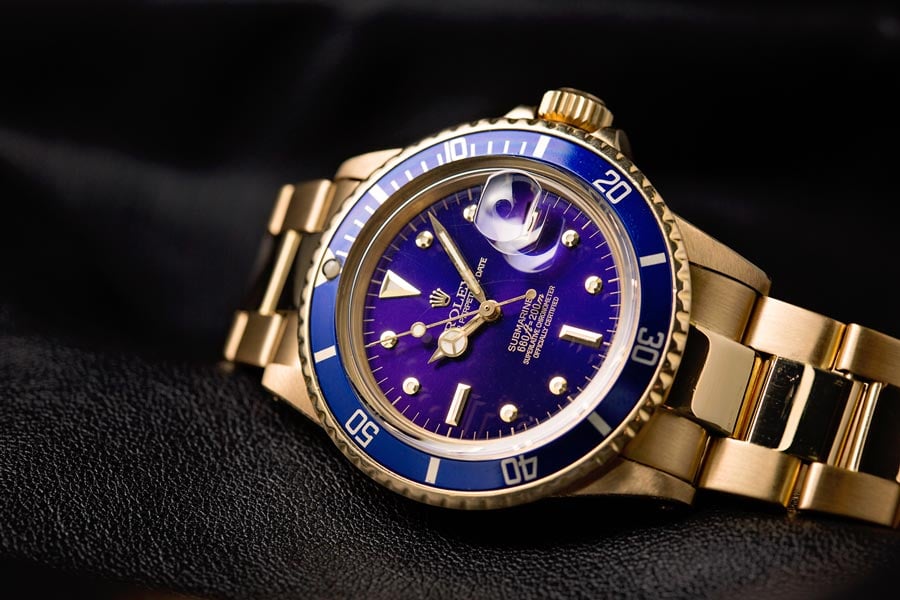
A Word About Vintage Rolex Watches and Material Codes
It’s important to point out that the material code is not necessarily applicable to vintage Rolex watches – particularly those with four-digit reference numbers.
For instance, Rolex made yellow gold versions of the GMT-Master ref. 1675; sometimes these are referred to as GMT-Master ref. 1675/8 but more often than not, they are simply known as yellow gold GMT-Master 1675 watches. The same goes for vintage Submariner 1680 models, whereby the yellow gold versions are occasionally called 1680/8 but more generally, they simply go by the “yellow gold Submariner ref. 1680” name.
On the other hand, modern Rolex watches – and most certainly current production Rolex watches – follow the material codes that we listed above. So now, you can easily identify the different types of metal for every Rolex watch by just reading its reference number.
